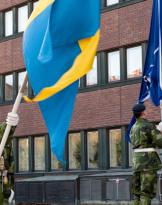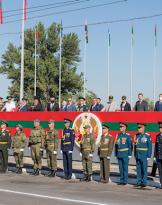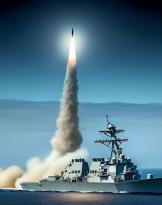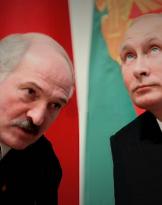If in the Italian Parliament someone has thought of sending 450 soldiers of our army to protect the Mosul dam, I believe and hope in my heart that I know, at least in part, the complicated story of a city ravaged by centuries-old conflicts, which they never found solutions and that the recent wars have turned first into a sanctuary of the Sunni insurgency, then into a stronghold of the al-Qaeda terrorists and finally into the symbolic capital of the Islamic State.
Mosul is the second inhabited center of Iraq: located north of Baghdad, along the Tigris River in the historic province of Nineveh, in the extreme north of a vast area known as the "Sunni Triangle". The majority of the population is precisely Sunni (70%) and cohabits, almost never peacefully, with different minorities such as the Kurds (25%), a small group of Shiites, Turkmen, Yazidis and Christians. During the "reign" of Saddam Hussein, Mosul was one of the military cornerstones of the Ba'athist party: according to an estimate made by American analysts, the Iraqi city would "donate" to the dictator no less than 300.000 military or intelligence workers.
In the 2003, the invasion plan prepared by the Pentagon for the operation Iraqi Freedom foresaw that the 4a Infantry Division penetrated Iraq from the north, through Turkey, so as to suppress behind every resistance of Saddam's Republican Guard; however, the lack of authorization by the Ankara government forced the Central Command (CENTCOM) to an alternative but more articulated solution. The international crisis and the threats of invasion feared by the United States had, in fact, exacerbated the clash between the Sunnis and the Kurdish minority which hoped that an American military intervention would finally represent the great opportunity for the establishment of its own independent state. Washington needed the support of the Peshmerga, however Bush could not absolutely support the Kurdish independence demands, since he would have created a far more serious crisis with the Turkish ally.
The American General Staff opted to send two thousand paratroopers of the 173rd Airborne Brigade Combat Team (ABCT) together with a large contingent of Special Forces which had a more political than a military role. The assistance of the JSOC (Joint Special Operation Command) also served to weigh the balance of power between the contenders and to limit, in some way, the independence push of the Democratic Party of Kurdistan (PDK) of Masoud Barzani and the Patriotic Union of Kurdistan (UPK) of Jalal Talibani. The military assistance plan also included a huge shipment of weapons and vehicles, as well as trainers, to allow the Kurds to win the battle mainly on the battlefield.
 But the biggest problems arose when the 11 April 2003, the V Iraqi Army Corps surrendered to the Americans: the Kurds, without control, broke into Mosul with a soul full of revenge. In that circumstance the American Special Forces found themselves having to manage a conflict without rules, where different factions vied for control of the city: the Kurds killed the Arabs who, in turn, were divided between pro or anti Saddam. The situation was damn complicated and the Americans realized that no plan had been prepared for the management of the conquered territories, neither short nor long term. The arrival of the peshmerga it also fomented the hatred of the Arab population which was the object of reprisals and uncontrolled violence.
But the biggest problems arose when the 11 April 2003, the V Iraqi Army Corps surrendered to the Americans: the Kurds, without control, broke into Mosul with a soul full of revenge. In that circumstance the American Special Forces found themselves having to manage a conflict without rules, where different factions vied for control of the city: the Kurds killed the Arabs who, in turn, were divided between pro or anti Saddam. The situation was damn complicated and the Americans realized that no plan had been prepared for the management of the conquered territories, neither short nor long term. The arrival of the peshmerga it also fomented the hatred of the Arab population which was the object of reprisals and uncontrolled violence.
The marines and Colonel Charlie Cleveland, commander of the 10th Special Forces Group they were invested by the protests of the population that claimed water and electricity: no one knew what to answer and the only decision was to appoint, as provisional governor, Mishan al-Jabouri considered a sort of local mafia leader. Needless to say, the rise of al-Jabouri caused more harm than good, and only military intervention temporarily halted the revolt of the population. Sacking, robbery, demonstrations and sabotage were only the beginning of the rise to power of two new Islamist groups called Ansar al-Sunnah e Ansar al-Islam.
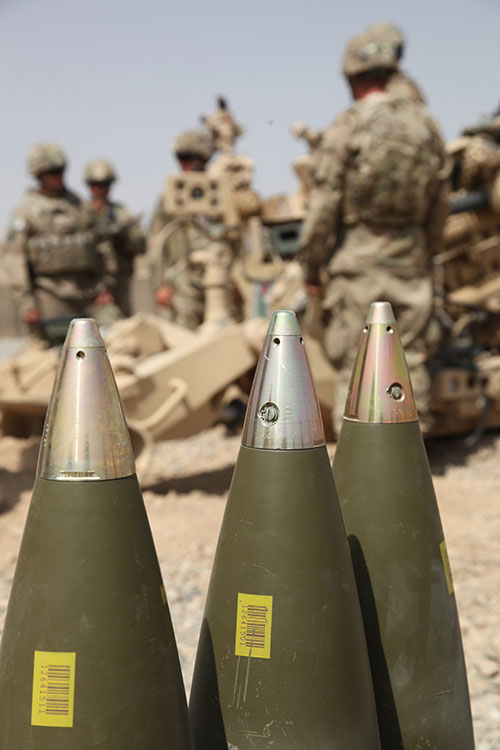
AQI in Mosul
Ansar al-Islam officially born in the 2001 from a rib ofIslamic Movement of Kurdistan, fearsome and ruthless adversary of the Kurdish minority of the country. In a short time, the leader and founder Mullah Krekar spread the Sharia throughout the province of Nineveh, sowing terror among those who did not want to conform to Islamic laws. During the war in Afghanistan, Ansar al-Islam he offered protection to many fleeing terrorists, many of whom were Arabs: among the best known was none other than Abu Musab al-Zarqawi, the Jordanian Salafist who pushed the organization to closer cooperation with al-Qaeda.
Things started to hurt when in the 2003 the Americans attacked Iraq, reinforcing the ranks of the peshmergas: many leaders and militants of Ansar al-Islam they were killed or imprisoned, while the survivors merged into a new jihadist Salafi group called Ansar al-Sunnah. I respect the political line followed by Ansar al-Islam, the leader of Ansar al-Sunnah, Abu Abdullah al-Shafi (captured in the 2010) impressed a strong radical imprint on the movement, pushing him ever further into the arms of bin-Laden. The terrorist base was located not far from Mosul and the ancient Iraqi city became one of the main points on which to focus actions against the Americans and the Kurds.
For the Bush administration, the post-Saddam took the form of a thorny bramble, where every move or decision turned into a real disaster: the Iraqi state was close to collapse and it was the Islamists who intensified their action to take advantage of it. destabilizing. The White House was under strong pressure from public opinion, but also from the same establishment military who proceeded empirically in search of a suitable solution that would combine military force with a refined work of Intelligence.
The solution came from one of the best men of the Pentagon, Major General David Paetreus who, precisely in Mosul, verified the validity of the new doctrine of Counterinsurgency. During the stay in the city, the 101st Airborne Division "Screaming Eagle", thanks to the funds profusely spent by the CERP (Commander's Emergency Response Program), drastically reduced the violent episodes to the detriment of the coalition. According to a report by Eric Hamilton, published byInstitute for the Study of War, seven months after the invasion of Iraq the paratroopers division invested 57 million dollars to sign about 5000 projects concerning the reconstruction of houses, the construction of public places, schools and hundreds of medical principals to treat the population. It was the last "relative" peace period in Mosul since the problems started again from the start of the 101 division.

In November of the 2004, AQI e Ansar al-Sunnah unleashed an offensive to recover the city: several police stations were assaulted without the agents opposing resistance and only the arrival of the 1 / 25th Stryker Brigade Combat Team and the Iraqi army pushed back the terrorists.
The Battle of Mosul is an important day for the Iraqi army which, apart from a few episodes, showed value and initiative. Obviously the presence of American troops and in particular of the Special Forces gave stimulus to their action; at this juncture many remember the story of senior sergeant Anthony "Andy" Yost, better known as "Big Tony". The American soldier of the 2 battalion (ODA 381) of the 3rd Special Forces Group it became a myth among Iraqis: Andy and other colleagues joined a regular army group to clean up various positions controlled by insurgents, particularly in Al Sukar northeast of Mosul. Unfortunately, Andy's courage exposed him to uncontrollable dangers and the November 19 fell victim to an explosive trap: his figure became a symbol of union between the Americans and the Iraqi army.
The victory of November 2004 still failed to decapitate al-Qaeda, which still managed to control a large part of the population: in the face of an expenditure of significant financial and human resources, Bush's strategy of pacification was not leading anywhere.
They were the remnants of a period that Thomas R. Mockaitis and analysts call "the lost years" in which American troops realized that the war, although it was over, did not coincide with a definitive solution for Iraq.
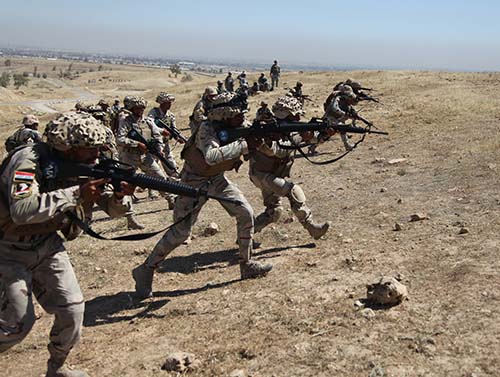
The operations of the 2007 and 2008
In the spring / summer of the 2007, the Coalition concentrated its offensive in and around Baghdad causing a progressive retreat of AQI and a decrease in terrorist attacks, including in the province of Mosul. According to Hamilton this decrease was attributable to three different factors: a general strengthening of the II and III Division of the Iraqi army and a greater accuracy of the operations conducted by the local security forces; secondly, AQI distracted men and vehicles from the northern sector to concentrate them in the capital with the consequent - third factor - weakening of the attack capacity in the Nineveh region.
In January 2008 the Iraqi government established the Niniwa Operations Command (NOC) entrusting him with the coordination of all the Iraqi armed forces operating in Mosul, including the police and border agents; Major General Riyadh Jalal Tawfiq was chosen to head the new body. However, progress against terrorism was very slow and, despite the work of intelligence of the NOC, AQI and Ansar al-Sunnah once again the dynamite attacks with IED and VBIED increased, causing countless victims. The first significant result was the 18 February 2008, when Iraqi troops captured Abd-al-Rahamn Ibrahim Jasim Tha'ir, the Emir who oversaw all the military actions of AQI on Mosul. It was the first of a series of brilliant results achieved by the NOC, which succeeded in infiltrating several agents into the terrorist plots, obtaining valuable information on al-Qaeda's hideouts. On February 27 another AQI leader was imprisoned, Abu Yasir al-Saudi better known as Jar Allah responsible for the southeast sector of Mosul and, about a month later, Ahmad Husayn Ghanim, known as Abu Mansur was headed operations east of Mosul. Still the same year it Joint Special Operation Command intensified the activity of his Task Force North composed of two platoons of Cleaning and an unspecified number of Delta Force: thanks to close surveillance and very accurate investigations, the Special Forces traced the hideout of one of AQI's most wanted terrorists, the Emir of Mosul Abu Khalaf, ending his life.
Were there any gaps between the terrorist protection network?

It is good to remember that between AQI and Ansar al-Sunnah there was a close collaboration with the sharing of common ideals, but the leaders of the Iraqi organization did not look favorably on foreign infiltration among al-Qaeda militants, favoring a more marked nationalist identity. The localism of Ansar al-Sunnah resurfaced when, in the 2006, the leaders declined the alliance with the nascent Islamic State of Iraq formed by Sunni extremists, while always maintaining cordial relations, in particular with Abu Omar al-Baghdadi, head of the ISI from the 2006 to the 2010 and successor of al-Zarqawi.
The dense exchange of information between the different Islamist identities, ensured the terrorists unlimited freedom of movement and the awareness of being able to act at any time and with the unanimous support of all organizations.
The control and the constant armed presence on the territory was the key to success in defeating the terrorists of AQI, at least this was the thought of Major General Mark Hertling, advocate of a combination of actions in the field and intelligence (a mixture that the American doctrine defines kinetic e non-kinetic operations). The American project for Mosul was to set a series of Combat Outpost (COP) in the vicinity of the city able to guarantee uninterrupted surveillance on the main communication routes, used equally by the coalition, but also by terrorists. As reported by Hamilton's report, each COP had to patrol a sector through police and military patrols and checkpoints, ideally along the same lines of communication used by al-Qaeda. The experiment failed due to rivalries between the Iraqi army (police and infantry) and units peshmerga, a tension found especially in Mosul which nullified any attempt to program a common strategy against AQI.

Mosul, the ISIS and the dam
In the following years the Iraqi scenario did not change, however al-Qaeda's power in Iraq and other Middle Eastern states underwent a decisive inversion. According to some, in the 2010, the offensive capabilities of Osama bin-Laden's terrorists had faded in the wake of the Arab Spring which, at least in appearance, had not been contaminated by Islamists. Contrary to the predictions of most Western democracies, including America, the Arab Spring soon turned into a powerful fertilizer for al-Qaeda militants.
Syria and the war against Assad's despotism became the epicenter of a new extremist team, which had its roots precisely in al-Qaeda in Iraq. ISIS or Islamic State in Iraq and Syria, was certainly a rib of the group of al-Zawahiri, but equally distant from the other quaedista group of Jabhat Al Nusrah (Relief Front for the People of Syria), both from a design point of view and in the modus operandi.
The Syrian fire and the rebellion against Assad acted as a glue between the insurgents of Aleppo and the Iraqi Sunni community: a report by 9 October 2013 of theInstitute for the Study of War describes an al-Qaeda that is far from weakened, but rather raised above all in the cities of Diyala, Salah ad-Din and Mosul. The groping in the dark of the international community and the mediocrity of the Iraqi authorities left the nascent Islamic state to turn the province of Nineveh into a stronghold. In the 2014 the inevitable happened, when the city of Mosul was conquered - without too much difficulty - by the black guerrillas of ISIS. The international press and the Americans immediately pointed the finger at the inability of the Iraqi troops, guilty of having lowered their weapons without firing a single shot.
A truthful report of what happened in Mosul was published by the agency Reuters which examined, in detail, the unfortunate exploits of the Iraqi general Mahdi Gharawi, military chief of the city. Already months before, the general sensed an imminent mass attack of the Islamic State: in May the Iraqi soldiers had, in fact, captured seven terrorists who revealed that the next target of the al-Baghdadi caliph would be Mosul and its important dam .
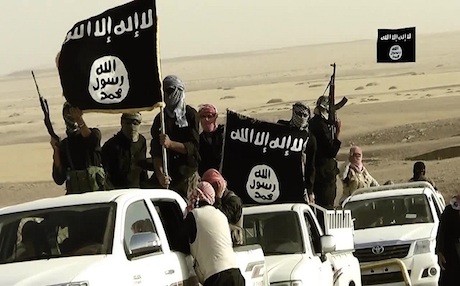 The 6 June, a convoy of pick-up trucks loaded with ISIS guerrillas moved towards the city and the mere sight of the black flags of the Islamic State panicked the defenders. After a few hours of fighting, the soldiers of the Iraqi army surrendered: many were executed on the spot, others were captured and later barbarously killed according to the macabre ritual used by ISIS. Few trusted in Iraqi military qualities, yet such poor resistance raised questions. Prime Minister Maliki appropriately dumped the entire disaster on the shoulders of General Gharawi, who was held responsible for the debacle Iraqi who sacrificed an entire division that day, but was it really only the army that was responsible for that defeat?
The 6 June, a convoy of pick-up trucks loaded with ISIS guerrillas moved towards the city and the mere sight of the black flags of the Islamic State panicked the defenders. After a few hours of fighting, the soldiers of the Iraqi army surrendered: many were executed on the spot, others were captured and later barbarously killed according to the macabre ritual used by ISIS. Few trusted in Iraqi military qualities, yet such poor resistance raised questions. Prime Minister Maliki appropriately dumped the entire disaster on the shoulders of General Gharawi, who was held responsible for the debacle Iraqi who sacrificed an entire division that day, but was it really only the army that was responsible for that defeat?
According to the survey conducted by the analysts of the Reuters, the fall of Mosul is due to a combination of factors, not least the hatred that the Shiite Gharawi general caused in the Sunni majority in the city. In this way ISIS managed to create a sort of sleeping cell, ready to rise and push the entire 3a Iraqi division towards the disaster. For his part, poor Gharawi could not do much to repel the 2.000 guerrillas of ISIS: on paper he counted no less than 2.500 units, while in reality he had just 500 soldiers, poorly armed and poorly motivated. The report of the Reuters finally, it also accuses the senior leaders of the Iraqi government guilty, so blatantly, of abandoning its soldiers' fate.
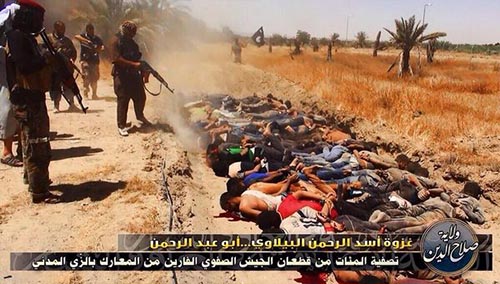 The fall of Mosul opened the way for the guerrillas to the important dam, located just 50 km from the city. The Iraqi water reserve and the entire economy of the country depend on this basin whose destruction would have caused the death of thousands of human lives and the collapse of an entire nation. As soon as the black flags of the Islamic State waved on the parapets of the dam, the United States - perhaps belatedly - poured all their efforts to support the peshmergas and reconquer the site. In a few days the American air force carried out no less than 68 air strikes of which 35 only on the Islamist positions around the dam; meanwhile from the ground the Kurdish troops and the Iraqi army drove back the troops of the caliphate, now exhausted by the American bombs. President Obama considered the recovery of the Mosul dam as one of the most important victories for the coalition, as it demonstrated the effectiveness of the collaboration between Kurds, Iraqis and Americans.
The fall of Mosul opened the way for the guerrillas to the important dam, located just 50 km from the city. The Iraqi water reserve and the entire economy of the country depend on this basin whose destruction would have caused the death of thousands of human lives and the collapse of an entire nation. As soon as the black flags of the Islamic State waved on the parapets of the dam, the United States - perhaps belatedly - poured all their efforts to support the peshmergas and reconquer the site. In a few days the American air force carried out no less than 68 air strikes of which 35 only on the Islamist positions around the dam; meanwhile from the ground the Kurdish troops and the Iraqi army drove back the troops of the caliphate, now exhausted by the American bombs. President Obama considered the recovery of the Mosul dam as one of the most important victories for the coalition, as it demonstrated the effectiveness of the collaboration between Kurds, Iraqis and Americans.
Although the dam is once again in safe hands, the general situation of the country and the scarcity of resources seriously endangers its existence. ISIS would therefore have only accelerated a process of deterioration of the structures that - according to US military sources - could collapse at any moment. The water basin contains 11 million cubic meters of water and is the main source of supply for Mosul and the whole province of Nineveh; the order of construction dates back to 1980, issued by Saddam Hussein and the works were completed in the 1984 by an Italian-German consortium, the Hochtier Aktiengesellshaft. The real dilemma, however, lies in the effective maintenance capacity of the dam, since the structure rests on a deposit of natural plaster which, on contact with water, is progressively unraveling: for this reason real injections are applied of concrete, useful to reinforce - daily - the foundations of the dam itself. If it collapsed, the population of Mosul would be wiped out by the wave of water and the consequences would be felt up to Baghdad, distant 400 kilometers away!
In the past few months the Trevi company in Cesena has won a billion dollar contract for the safety of the dam and our prime minister, Matteo Renzi, said in a preview in the transmission conducted by Bruno Vespa that Italy would be committed to protecting the workers sending a contingent of 450 soldiers. Among the units selected for the mission are the paratroopers of the thunderbolt or perhaps the bersaglieri of the Governolo which, however, seems to have not yet received instructions about their duties and rules of engagement.
The recent statements by the Minister of Defense, Roberta Pinotti, reaffirm the concept that Italian soldiers will not go to Iraq to fight, but in light of the above and given the importance of Mosul for ISIS and AQI, it seems possible that Don't our paratroopers shoot at all?
We are at the usual expressions of a government whose politics, in military matters, quite faithfully reflects the estate adopted by Renzi when he goes to visit our soldiers: jeans and vegetated jacket. Perhaps someone should explain to him that sending 450 of our best boys, in one of the hottest areas of the Iraqi front, cannot be treated with the same ease with which he combines his clothes. Perhaps it would be better if the government wore, once and for all, the most suitable dress to affirm what the real capabilities of our soldiers are, avoiding dangerous contradictions.
Our premier, once back in Rome, puts his vegetato in the most hidden of his shelves ... Someone else, more distant, continues to wear it, without hiding its pride.
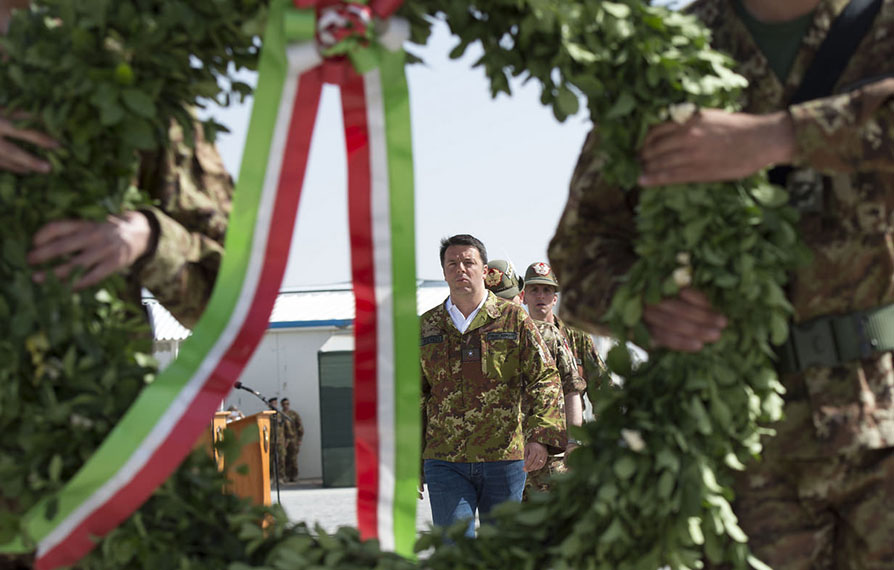 (photo: web / US DoD / Presidency of the Council of Ministers)
(photo: web / US DoD / Presidency of the Council of Ministers)




